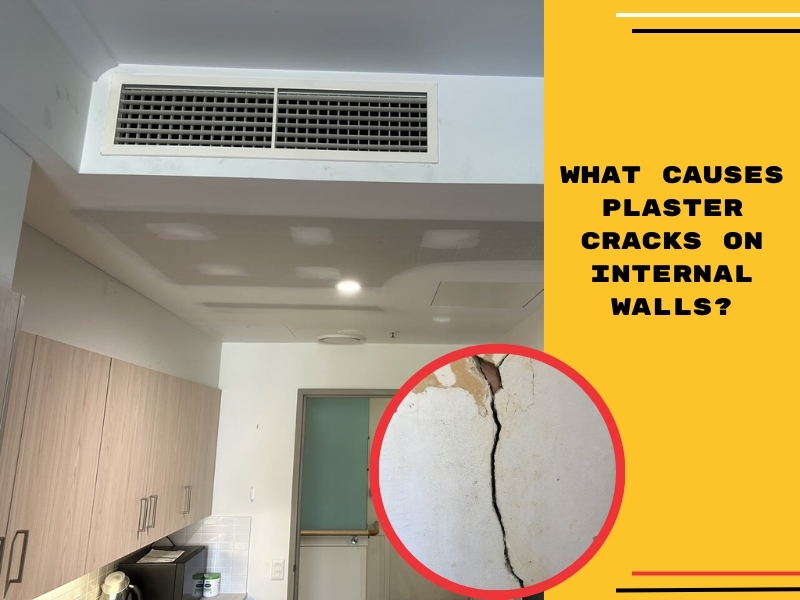Plaster cracks are a common issue faced by homeowners and businesses alike. While they may appear harmless, they can signal underlying problems that require attention. Understanding the causes of these cracks can help you address them promptly and maintain the integrity of your walls. This article explores the common causes of plaster cracks and provides insights on how to prevent them.
What are the common types of plaster cracks?
Cracks in plaster can vary in appearance and severity. Here are the most common types:
- Hairline cracks: These are thin, superficial cracks often caused by minor movement or drying shrinkage. They are usually not a structural concern.
- Shrinkage cracks: These occur as plaster dries and shrinks, mainly when applied too thickly or unevenly.
- Structural cracks: Wider and deeper cracks that indicate underlying issues, such as foundation shifts or wall movement.
- Stress cracks: These appear near doors, windows, or corners where stress concentrates due to structural movement or poor installation.
- Water damage cracks: Caused by moisture seeping into the walls, leading to weakened plaster and visible cracks.
Identifying the type of crack is the first step in determining the appropriate solution.
Why does poor-quality plastering lead to cracks?
Substandard plastering techniques or materials can significantly contribute to cracks. Common causes include:
- Incorrect mixing: Using the correct ratio of water and plaster can strengthen the finish.
- Inadequate preparation: Poorly prepared surfaces can prevent the plaster from separating and cracking.
- Application errors: Uneven application or failure to apply sufficient layers can lead to weak spots.
- Substandard materials: Low-quality plaster materials need more durability for long-term performance.
- Insufficient curing: Failing to allow proper drying time between layers can compromise the plaster’s strength.
Ensuring quality plastering from the start can save time and money in the long run.
How can seasonal changes affect plaster cracks?
The climate in Brisbane and South East Queensland plays a significant role in plaster durability. Seasonal changes can cause the following issues:
- Humidity: High humidity during summer can cause plaster to absorb moisture, weakening its structure.
- Temperature fluctuations: Expanding and contracting walls due to temperature shifts due to Australia’s warming climate may lead to cracking.
- Drying rates: In colder winter months, plaster may take longer to dry, resulting in uneven surfaces prone to cracks.
- Dry heat: Rapid drying during hot weather can cause plaster to shrink too quickly, leading to surface cracks.
Understanding local weather patterns is crucial when planning plastering projects.

Can building movement cause cracks in plaster walls?
Buildings naturally move over time due to various factors. This movement often causes cracks in plaster walls:
- Foundation shifts: Soil expansion or settling can lead to structural shifts, causing plaster to crack.
- Vibrations: Heavy traffic, nearby construction, or even daily activities can create vibrations that stress plaster walls.
- Aging materials: Older buildings with worn-out materials are more prone to structural movement and cracking.
- Renovations: Modifications to a property, such as removing walls or adding extensions, can introduce stress to plastered surfaces.
Regular inspections and proper structural support are essential to minimising damage.
Are hairline cracks normal or a sign of a bigger problem?
Not all cracks require immediate concern, but some may indicate more significant issues:
- Normal settling: Hairline cracks are often harmless and caused by the natural settling of a new building.
- Structural concerns: If cracks are recurring, growing, or accompanied by uneven walls, they may signal foundation problems.
- Water-related issues: Hairline cracks with discolouration or dampness suggest water damage and need attention.
- Movement: Cracks near windows, doors, or ceilings might indicate stress from shifting frames or beams.
Monitoring hairline cracks over time can help you identify when professional intervention is needed and determine when to fix hairline cracks in plaster walls.
What environmental factors cause plaster cracks?
The surrounding environment can also affect plaster walls:
- Water damage: Leaks from roofs, pipes, or windows can seep into plaster, weakening its integrity.
- Salt exposure: In beachside properties, salt in the air can deteriorate plaster over time.
- Extreme weather: Prolonged exposure to intense heat, storms, or cold can compromise plaster strength.
- Bushfire zones: Properties in bushfire-prone areas may experience extreme heat stress, leading to cracking.
Protecting plaster walls from environmental factors can extend their lifespan and maintain their appearance.
Why is regular maintenance crucial for preventing plaster cracks?
Ongoing care is essential to minimise the occurrence of cracks:
- Timely Repairs: Addressing minor cracks prevents them from worsening.
- Inspecting for Damage: Regularly check for water leaks, dampness, or other potential causes of cracks.
- Repainting: Repainting walls protect plaster from environmental factors, especially in high-humidity areas like Brisbane.
- Seasonal Care: Maintain your walls according to the season, such as applying moisture barriers before summer or repainting in autumn.
- Professional Assessments: Periodic inspections by plastering professionals can help spot issues before they become serious.
A proactive approach can help avoid costly cracked wall repairs in the future.

When should you seek professional help for plaster fractures?
Knowing when to call in experts can save time and ensure the job is done right:
- Deep or widening cracks: These often indicate severe structural issues that require professional attention.
- Recurring cracks: If cracks keep reappearing after DIY fixes, an expert assessment is necessary.
- Water damage: Cracks accompanied by damp patches, mould, or peeling paint should be addressed immediately.
- Significant areas of damage: Extensive cracking across walls or ceilings may require comprehensive plastering repairs.
- Commercial spaces: Business owners should ensure cracks don’t impact the aesthetics or safety of their premises.
Professionals can provide tailored solutions that address the root cause, ensuring long-lasting results.
Addressing plaster cracks effectively
Plaster cracks are a common concern for both homeowners and businesses. While some cracks may be harmless, others can signal underlying issues that require professional attention. Identifying the cause, whether it’s poor-quality plastering, environmental factors, or building movement, is the first step toward an effective solution. Regular maintenance and timely repairs with plaster crack repair service can prevent minor cracks from turning into costly problems.
For those in Brisbane and South East Queensland, Djari Group offers expert plastering and painting services. With over 20 years of experience, they understand the local climate and construction conditions, providing high-quality work to ensure your plastered surfaces remain in top condition. Whether you’re dealing with minor hairline cracks or more significant structural issues, Djari Group is ready to help with professional solutions tailored to your needs. Contact Djari Group today for a free quote and feel the Djari Group difference!



